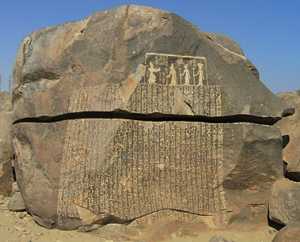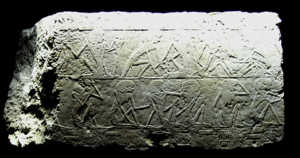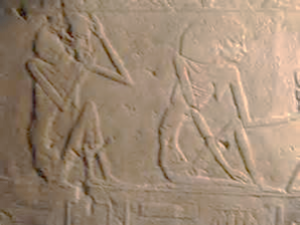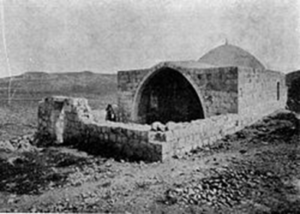With introducing the topic of Joseph with evidence from Egypt, it is important to note that dating systems from Egyptian chronology and Egyptologist from archaeology are inconsistent with the biblical chronology based on 1) “the Egyptians puffed up history into epics,”1)Will Durant, The Story of Civilization: Our Oriental Heritage, Simon and Shuster (New York, NY: 1954), Vol. 1, p. 936 and 2) because archaeologist start with this Egyptian time scale as their presupposition, it throws their entire chronology off. The many lists of Egyptian texts are so inconsistent to make their self-proclaimed history almost unintelligible at times, while a growing number of archaeologist are understanding that their time frames need to be shifted close to five hundred years to match up with the rest of history derived from surrounding civilizations. It is also important to recognize that ancient documents often misconstrue facts and even names. For example, Herodotus speaks of the Egyptian king Sesostris, saying: “The pillars which Sesostris erected in the conquered countries have for the most part disappeared; but in the part of Syria called Palestine, I myself saw them still standing, with the writing above-mentioned, and the emblem distinctly visible.”2)Herodotus, The Histories, Book II, para. 106 (Trans. George Rawlinson), Alfred A. Knopf (New York, NY: 1997), p. 175 However, Josephus corrects this earlier historian, stating, “Herodotus was mistaken, and applied his actions to Sesostris; for this Shishak, in the fifth year of Rehoboam, made an expedition [into Judah] with many ten thousand men; for he had one thousand two hundred chariots in number that followed him, and threescore horse-men, and four hundred thousand footmen.”3)Josephus, antiquities of the Jews, Book VIII, Chap. X, para. 2-3; The Complete Works of Josephus (Trans William Whiston) Kregel Publications (Grand Rapid, MI: 1981) p. 186 For the reason of the known need to adjust much of the presupposed chronology of Egypt, the documented texts in this article may or may not be consistent in the chronology, but the evidence still stands to present Joseph as a historical character and the events that revolve around his narrative in the Bible can be trusted.
Charles F. Aling wrote, “If the Biblical numbers are taken literally and at face value, the probable kings during the enslavement and subsequent rise to power of Joseph would have been Sesostris II (1897-1878 BC) and Sesostris III (1878-1843 BC). This argument than rests on how one interprets 1 Kings 6:1, a verse which dates the Exodus 480 years before the fourth of Solomon, ca. 966.”4)Charles F. Aling, “The Historicity of the Joseph Story,” Bible and Spade, Vol 9:1 (winter 1996), p. 18 While Egyptologist attempt to date the events of Joseph in the Hyksos period which they date (ca. 1664-1555 BC) this cannot be reconciled with the biblical information. Scripture speaks of “Potiphar, an officer of Pharaoh, captain of the guard, an Egyptian” (Genesis 39:1) who bought Joseph when he was sold into slavery. The Hyksos retained the term Pharaoh when they ruled in Egypt, but it is unlikely they would have had an Egyptian such as Potiphar as their “captain of the guard.” When Joseph was first brought before the Pharaoh, he was shaved (Genesis 41:14) which was an Egyptian custom; the Hyksos were Syro-Palestinian culture, similar to Joseph who needed to be shaved because that culture was nothing like Egypt’s. Finally, when Joseph rose to prominence in Egypt, he ruled “over all the land of Egypt” (Genesis 41:41); but the Hyksos only ruled of the northern part. Simply put, we cannot trust the dates set or the chronology of lists of kings, but will simply look at evidence that confirm the events as recorded in the Bible.
Aling speaks of the titles that Joseph was recognized with in Genesis 41:40-41, and 45:8 “a father to Pharaoh, and lord of all his house, and a ruler throughout all the land of Egypt” as synonymous with know Egyptian offices. “Khnumhotep held both the title Vizer and Chief Steward of the King. He is, to my knowledge, the only person in the Middle Kingdom to have done so. Nor was this done in other periods of Egyptian history.”5)Charles F. Aling, “The Historicity of the Joseph Story,” Bible and Spade, Vol 9:1 (winter 1996), p. 26 He does not assume this Khnumhotep was Joseph, but says, “Perhaps, if Joseph was Vizer and Chief Stewerd in the last years of Sesostris II and the early years of Sesostris III, it is conceivable that after Joseph’s retirement, Khnumhotep could have also have been granted both of these high court positions. We at the very least see that the combination is a possibility in the Middle Kingdom.”6)Charles F. Aling, “The Historicity of the Joseph Story,” Bible and Spade, Vol 9:1 (winter 1996), p. 26-27 It is also possible that the dates are unreliable and this Khnumhotep is possibly Joseph. A list of the Egyptian dynasties and Pharaohs can be view as perceived by secular Egyptologists here.
The Bible records Joseph major attribute that caused him to rise from prisoner to head figure only under Pharaoh. He interpreted Pharaoh’s dream as a warning that seven years of plenty and seven years of famine would be over the face of the earth. Joseph concluded this by saying, “And let them gather all the food of those good years that come, and lay up corn under the hand of Pharaoh, and let them keep food in the cities. And that food shall be for store to the land against the seven years of famine, which shall be in the land of Egypt; that the land perish not through the famine”(Genesis 41:36). The Bible then indicates, “And the famine was over all the face of the earth: and Joseph opened all the storehouses, and sold unto the Egyptians; and the famine waxed sore in the land of Egypt” (Genesis 41:56) There is a letter recorded as from King Zoser (allegedly Third dynasty c. 2668-2649 BC) to a governor that reads, ““I am very much concerned about the people in the palace. My heart is heavy over the calamitous failure of the Nile floods for the past seven years. There is little fruit; vegetables are in short supply; there is a shortage of food generally. …the storehouses have been opened, but everything that was in them has been consumed.”7)cited by J.A. Thompson, The Bible and Archaeology, Eerdmans Publishing Co. 1962, p. 46 This is not consistent with the time frame we would expect, but it identified a seven year famine as well as storehouses prepared for the famine, giving credibility to the Biblical account. Wikipedia tells us, “Djoser, also anglicized as Djeser and Zoser, was an ancient Egyptian pharaoh of the 3rd dynasty during the Old Kingdom and the founder of this epoch”,8)https://en.wikipedia.org/wiki/Djoser which sets a bases for the next inscription which uses the spelling Djoser. Gregory Drake refers to an inscription, stating:
On the island of Sihiel, near the first cataract of the Nile, is a great stone with inscriptions which links Imhotep to a key Biblical element of the Joseph story — it tells of Pharaoh Djoser in the 18th year of his reign. The inscription states ‘seven meagre years and seven rich years’. “Pharaoh Djoser asks Imhotep to help him with the coming seven years of famine.”9)Gregory Drake, “Joseph of Egypt,” http://sciencehistoryfaith.com/History-Joseph_In_Egypt.html?vm=r&s=1
 This intriguing inscription bears a resemblance to the spelling of the name Joseph with Imhotep and well as the name Aling mentioned Khnumhotep. Furthermore, it speaks of the seven years of plenty as well as the following seven years of famine. Most importantly, it identifies that the Pharaoh asks Imhotep for help with the coming seven years of famine. How did this Pharaoh know about the seven years of famine that were yet to come in the future if it had not been predicted?
This intriguing inscription bears a resemblance to the spelling of the name Joseph with Imhotep and well as the name Aling mentioned Khnumhotep. Furthermore, it speaks of the seven years of plenty as well as the following seven years of famine. Most importantly, it identifies that the Pharaoh asks Imhotep for help with the coming seven years of famine. How did this Pharaoh know about the seven years of famine that were yet to come in the future if it had not been predicted?
Roman historians have also record Joseph as having been able to predict the coming famine in Egypt. For instance, Marcus Junianus Justinus (3rd. century A.D.) whose work preserved the more ancient writtings of Pompeius Trogus, wrote “Being carried by them into Egypt, and having there, by his great powers of mind, made himself master of the arts of magic, he found in a short time great favour with the king; for he was eminently skilled in prodigies, and was the first to establish the science of interpreting dreams; and nothing, indeed, of divine or human law seems to have been unknown to him; so that he foretold a dearth in the land some years before it happened, and all Egypt would have perished by famine, had not the king, by his advice, ordered the corn to be laid up for several years; such being the proofs of his knowledge, that his admonitions seemed to proceed, not from a mortal, but a god.”10)Marcus Junianus Justinus, Epitome of the Phillipic History of Pompeius Trogus, Book 1, Chap. 36, Para. 2; accessible at http://forumromanum.org/literature/justin/english/trans36.html
Drake also commented that, “There is a carving in Sakkara showing starving people — their ribs prominently outlined — also depictions of sacks of grain being carried up steps in the circular silo vaults.”11)Gregory Drake, “Joseph of Egypt,” http://sciencehistoryfaith.com/History-Joseph_In_Egypt.html?vm=r&s=1 The seven years of famine is also mention in an Egyptian document know as “The Complaint of Khahkeperre-Seneb.” Obviously this event was a big thing on the memory of Egypt.
There is a marble tablet in a ruined fortress on the seashore of Hadramaut wich is the present-day Democratic Yemen. This also mentions a seven year famine and verifies that this famine was far reaching beyond the land of Egypt, as the Bible say “all the face of the earth” (Genesis 41:56) and it surely affect up to the land of Canaan causing Joseph’s family to come to Egypt. The document form Yemen states:
We dwelt at ease in this castle a long tract of time;
Nor had we a desire but for the region-lord of the vineyard.
Hundreds of camels returned to us each day at evening,
Their eye pleasant to behold in their resting-place.
And twice the number of our camels were our sheep,
In comeliness like white does, and also the slow moving kine.
We dwelt in this castle seven years of good life
–how difficult for memory its description!
Then came years of barren and burnt up:
When one evil year had passed away,
Then came another to succeed it.
And we became as though we had never seen a glimpse of good.
They died and neither foot nor hoof remained.
Thus fares it with him who renders not thanks to God:
His footsteps fail not to be blotted out from his dwelling.12)Reported in Niebuhr’s Voyage an Arabie, PL. LIX; trans. By Rev. Charles Foster as cited by Grant R. Jeffery, The Signature of God, Inspirational Press (New York, 1996, p. 43
This confirms “seven years of good life” which in light of the famine became “difficult for memory,” and “we became as though we had never seen a glimpse of good.” This resembles the language of Scripture that after the seven years of plenty, “all the plenty shall be forgotten” (Genesis 41:30). It also points us to the fact that “Joseph opened all the storehouses, and sold unto the Egyptians” (Genesis 41:56), but apparently not to people in other lands, with the exceptions of his own family. This factor is revealed in another inscription from a grave of a rich Yemen women.
In thy name O God, the God of Hamyar,
I Tajah, the daughter of Dzu Shefar, sent my steward to Joseph,
And he delaying to return to me, I sent my hand maid
With a measure of silver, to bring me back a measure of flour:
And not being able to procure it, I sent her with a measure of gold:
And not being able to procure it, I sent her with a measure of pearls:
And not being able to procure it, I commanded them to be ground:
And finding no profit in them, I am shut up here.
Whosoever may hear of it, let him commiserate me;
And should any woman adorn herself with an ornament
From my ornaments, may she die with no other than my death.13)Reported in Niebuhr’s Voyage an Arabie, PL. LIX; trans. By Rev. Charles Foster as cited by Grant R. Jeffery, The Signature of God, Inspirational Press (New York, 1996, p. 45
Gary A. Byers wrote about more remarkable evidence that has come up in excavations in Egypt that have also been muddled by Egyptologist because of their presuppositions on the dates. “Recent excavations in the eastern Nile delta may have actually identified the location of Joseph’s residence in retirement and even his tomb. At a site known as Tell el-Daba today, The Rameses of the Old Testament, extensive excavations have been carried out under the director of Manfred Bietak of the Austrian Archaeological Institute, Cairo, since 1966… The site has evidence for Asiatic as early as the mid-12 Dynasty (mid-19th century BC), the general period when Jacob enter Egypt. It was an unfortified rural settlement, although numerous enclosure walls probably kept animals.”14)Gary A. Byers, “Israel in Egypt,” Bible and Spade, Vol. 18:1 (winter 2005), p. 4 Interestingly, it was because Jacob and his family were shepherds, that when he was introduced to the Pharaoh, they were given the land of Goshen to stay (Genesis 46:33-34; 47:1-4). The Bible indicates that this land of Goshen was also “the land of Rameses” (Genesis 47:11). The settlement excavated was known to be the capital named Avaris during the Hyksos rule in Egypt (known as the fourteenth Dynasty, see Exodus 1:8), but Rameses under the Egyptian rulers.
Aling speaking of this discovery acknowledged that there were twelve tombs in the yard of a palace.15)Charles F. Aling, “The Historicity of the Joseph Story,” Bible and Spade, Vol 9:1 (winter 1996), p. 20-21 Byers further related:
A cemetery with artifacts that connected it to the houses was also excavated in the open space to the southwest. One of the tombs was monumental in construction and totally unique in finds. Inside were found stone fragments of a colossal statute of a man who was clearly Asiatic, based on the yellow painted skin, the red-painted mushroom-shaped hairstyle and throwstick on his right shoulder (the hieroglyph for foreigner)…
While the other tombs nearby had intact skeletons, the only finds in the monumental tomb were fragments of an inscribed limestone sarcophagus and a few bone fragments. The body was gone!16)Gary A. Byers, “Israel in Egypt,” Bible and Spade, Vol. 18:1 (winter 2005), p. 4
This fact is remarkable because the Bible records Joseph’s words to his brethren that when he would die, that his bones were to be brought to the promised land, and when he did die, he was embalmed by the Egyptians (Genesis 50:24-26). John Elder explains:
In the last verses of Genesis it is told how Joseph adjured his relatives to take his bones back to Canaan whenever God should restore them to their original home, and in Joshua 24:32 it is told how his body was indeed brought to Palestine and buried at Shechem. For centuries there was a tomb at Shechem reverenced as the tomb of Joseph. A few years ago the tomb was opened. It was found to contain a body mummified according to the Egyptian custom, and in the tomb, among other things, was a sword of the kind worn by Egyptian officials.17)John Elder, Prophets, Idols and Diggers, New York, Bob Merrill Co., 1960, p. 54
There is much more that can, and has been elsewhere documented on the topic. Surely, there is enough evidence to confirm the reliability of the events that revolved around Joseph in Egypt as recorded in the Bible. Oddly, the scholars seek to every other source that is known to be unreliable to develop their opinion of history.
For more archeological evidence of Joseph in Egypt, see “More Evidence for Joseph from Egypt.”
References



